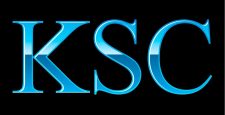As a lifelong learner and a career educator, it is important to me that time I invest in growth that is engaging, relevant and resulting in transformation, not just information. Over the years, I have spent too much time in spaces that did not teach me anything, and if I am being completely honest, I have spent too much time teaching things that were not of value to my students. In spaces when I have learned something, I have too quickly lost it, and exerted a lot of energy looking for tips and tricks to prevent that from happening. For myself and for my students, my goal is to have impact that sticks. And I finally discovered the missing piece of the proverbial puzzle.
We know that sessions that engage participants with all their senses are far more effective than sessions where one person talks and everyone else listens (or pretends to anyway). Despite persistent claims by visual learners, we all benefit from visual aides as well as movement and experiential opportunities. But they are only effective to a point. As it turns out, if students do not continue to work with the new knowledge or skill they have gained after the session is over, they will lose it just as easily. Engaging, hands-on sessions are necessary but not sufficient. To create knowledge that sticks, participants must put their learning into action and continue to put it into action over and over again. This is true for your own professional development, the development of your team and the development of your students (shoutout to my fellow educators!)
Hermann Ebbinghaus, the preeminent psychologist in the field of of learning and memory, developed something called the Forgetting Curve which captures how quickly we lose information after acquiring it. And it is so much quicker than should be legal!
Ebbinghaus found that, just 20 minutes after a learning session, you lose 42% of the information. 42%! AFTER JUST 20 MINUTES! So, all those trainings that you love so much and are so impacted by but forget before lunch? Fortunately, or unfortunately, totally normal.
It only gets worse from there. After just an hour, you lose over half of the information and just one day later, nearly 2/3. By the time you get to six days, it is up to 75%. If you do not implement that skill or knowledge you acquired within a week of acquiring it, you are going to lose it. As will your staff and as will your students.
So, knowing this, what should you do about it?
Well, if you want learning that sticks, and I am confident you do, then you need to have a plan for after the workshop is over. Yes, trainings and conferences can be great, but if you are hoping to grow as a professional and help your team grow as well, you cannot rely on these to create lasting learning and change. It simply does not work that way. To foster lasting growth, you need to commit to an intentional process of professional growth where the learning is implemented almost immediately after the session with lots of opportunity to process and reflect both individually and with others. Then, the learning can be enhanced and again, put into action quickly, creating a growth cycle that creates lasting change.

In the United States alone, over $87 billion is spent annually on professional development. Let’s make sure we have something to show for that investment. Commit to growth opportunities for yourself and your team that will prove transformational, not just informational.






